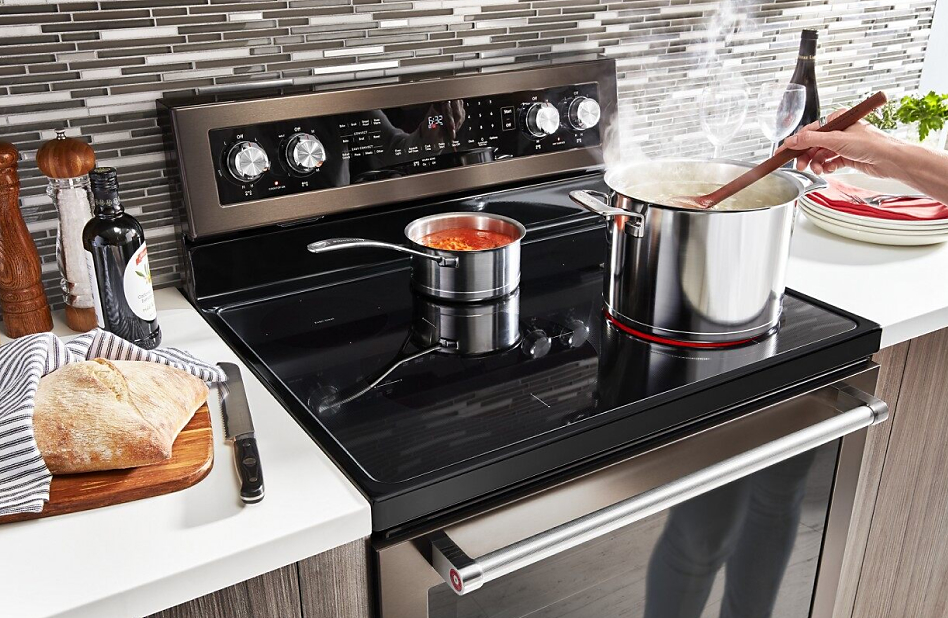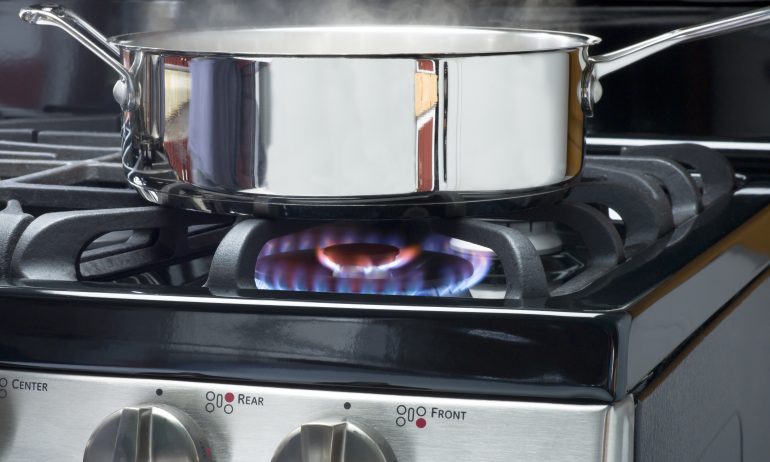Unlike outdoor pools, indoor swimming pools add year-round enjoyment and value to your property since they’re not subjected to weather

Most American homeowners either own an electric or gas smooth top range, with a smaller proportion owning induction or electric coil-top ranges. So, if you’re planning to buy a new cooking appliance for your home, it’s important to compare gas vs electric stoves.
According to a report published by the US Energy Information Administration, about 50% of homes in the country power their appliances with natural gas. In addition, home chefs prefer natural gas stoves and many real estate agents even use them to showcase homes to prospective buyers. On the other hand, electric stoves can be both elegant and functional, with some models including features you’ll not find on the gas variants.
So, what is the best option; gas or electric stove? In this article, we’ve listed some important features you can use to compare both options to help you find the right option for your home!
Comparison: Gas Vs Electric Stove

The biggest difference between an electric and a gas stove is the power source. As the name implies, a gas stove either uses gas or liquid propane as its fuel source. It’s plumbed to a gas line and operates by igniting combustion fuel to generate a flame. Many professional chefs prefer gas stoves due to their ability to adjust the flame size instantly. This promotes faster and more precise temperature control.
On the other hand, an electric stove only runs on electricity. It’s usually plugged into a dedicated 220V outlet to accommodate the larger power draw. More notably, it works by running an electric current through the stove’s metal coils, thus making them heat up. Best of all, electric stoves are ideal for homes that primarily use electricity and other heat sources like gas and liquid propane.
The kind of power source in your home is an important factor to consider when choosing between an electric and gas stove. For instance, if you already have an electric hookup or a gas line, switching from one model to another can be costly.
In terms of appearance, electric and gas stoves look the same and are available in standard appliance sizes. Moreover, both options come in a wide range of colors, finishes, and styles, with most standalone units featuring an oven beneath the stove. However, the stovetop’s appearance tends to vary depending on its mode of functionality.
A gas stove comes with raised, visible burners & rings, and grates to set your pans and pots on. On the other hand, an electric stove uses coils, which are either under glass or visible to provide a sleeker appearance.
Modern electric stoves usually feature a flat glass or ceramic glass surface placed over heating coils. Moreover, cookware sits directly over this ceramic or glass surface. Plus, the surface glows bright red when heated, alerting you about the hot surface.
However, older electric stove models did not have a smooth ceramic or glass top, Instead, the heating elements rose above the metal surface and coiled, allowing you to directly put your pans or pots upon the coil. As a result, these surfaces are less elegant and harder to clean. Interestingly, the popularity of such electric stovetops has declined.

An electric stove provides steady heat at any setting, thus producing consistent low heat, without the risk of it going out like gas. For that reason, it’s ideal for simmering or keeping food warm for longer than its gas counterparts. Moreover, you can use an electric stove for induction cooking. This cooking method uses less energy, heats food more evenly, and experiences fewer problems with scorched pans.
However, a gas stove works better at high temperatures than an electric stove and has the additional benefit of an open flame. This gives you more flexibility since you can use the stove to flambe, toast, or char. All in all, both appliances perform similarly for everyday cooking.
Generally, installing an electric stove is a relatively simple process, especially if your kitchen already has a 220V outlet. Moreover, you can either carry in the appliance, plug it in, or hardwire it. Best of all, you can do this yourself in less than 60 minutes.
A gas stove, however, is more difficult to install, especially if you don’t have an existing gas line in your kitchen. In that case, you need to tap the gas line off the main line and direct it into your kitchen. Next, hook up the gas line to the stove and plug it on or hardwire it for the clock/ time and electric ignition features. On the downside, adding a gas line to your property will significantly increase the cost of the gas stove installation project.
A gas stove is designed to ignite and generate heat right away, allowing you to start cooking food quickly. Similarly, the heat ceases immediately when you shut it off and the burner starts to cool. This means you can leave your pots on the range without the risk of overcooking your food. On the downside, a strong wind gust from an open window or running fans can put out the flame on your gas stove while cooking.
In comparison, an electric stove heats up more slowly, thus taking a few minutes to reach the desired temperature. This will delay how quickly you can start cooking your food. Also, the heating element stays hot for several minutes after shutting off the burners, increasing the risk of overcooking if you leave the pot on the burner.
In general, an electric stove is less costly to buy than a gas stove by up to 15%. For instance, the average cost of buying a 5.3 cubic ft, the single-oven electric stove is around $500, while a gas stove costs about $600. The actual cost of buying both types of stoves will vary depending on options available, size, and the number of ovens. However, gas stoves are slightly more efficient to use and can save you money on your energy bill in the long run.
One of the biggest benefits of gas stoves is that they can still function during a power outage since they only need a match to ignite. However, electric stoves don’t work in a power outage since they completely depend on electricity to run. Alternatively, you can use a backup energy supply like a generator to cook with your electric stove until electricity is restored.
Conclusion
When comparing gas vs electric stoves, look for the most comfortable option while cooking. For instance, if you’re nervous about cooking on an open flame, choose an electric stove instead of a natural gas stove. However, if you’re a professional chef or budget-minded, a gas stove may be the best option for you! Alternatively, you can look for a duel-fuel stove to enjoy the benefits of both an electric and gas stove.
It stood out to me when you talked about how a gas stove can generate heat right away. It seems like it would be a good idea to use a gas stove if you are someone who does a lot of cooking. You would want a gas stove so that you can save time rather than waiting for heat to be generated.